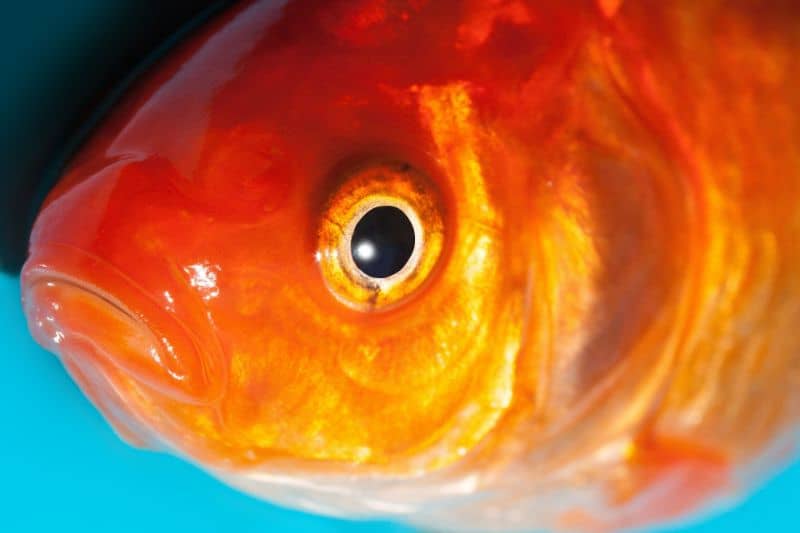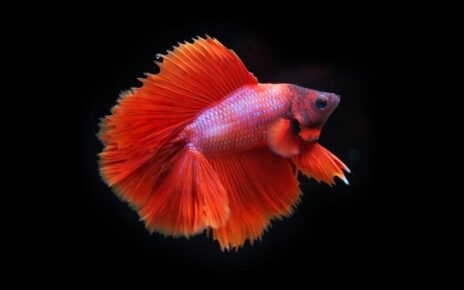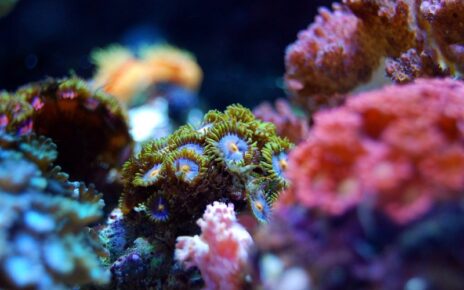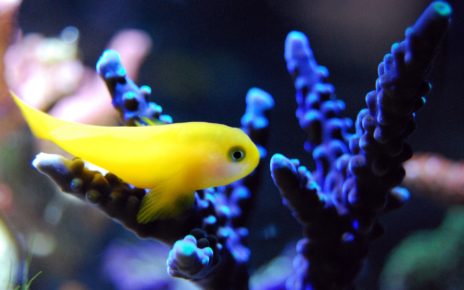If you own a fish tank, it’s important to be able to identify the signs of ammonia poisoning in fish. Ammonia is a harmful chemical that can cause serious damage to fish, and if left untreated, can lead to death. On this page, we’ll discuss the signs of ammonia poisoning in fish, as well as how to treat it. We’ll also provide some tips for preventing ammonia poisoning. Keep reading to learn more!
Signs of Ammonia Poisoning in Fish
Signs that a fish may be suffering from ammonia poisoning include gasping for air, lethargy, red gills, red spots and sores on their body, and difficulty swimming.
If you notice any of these signs in your fish, it’s important to take action immediately. The best way to treat ammonia poisoning is to do a water change and remove any sources of ammonia from the tank. By taking quick action, you can help your fish recover and avoid further health problems.
Ammonia poisoning in fish can be identified by the following signs:
- The fish is laying on the bottom of the tank.
- Gills are reddened and inflamed.
- Fish is gasping for air
- Fish are swimming erratically or upside down.
- Excess mucus on and around the gills.
- Lethargy and apathy are displayed by the fish.
Fish Gasping
One of the most obvious signs is fish gasping for air at the surface of the water. This behavior results from the fish’s gills being damaged by ammonia, which causes them to be unable to properly extract oxygen from the water.
Fish Won’t Eat
One of the most common signs of ammonia poisoning in fish is that they simply stop eating. This can be a sign that the ammonia levels in their water are too high, and they’re struggling to digest their food properly. Ammonia can also irritate and burn the fish’s skin and gills, causing them to avoid eating as well.
Fish Is Lethargic
Ammonia poisoning in fish is often marked by lethargic behavior. The fish may lie at the bottom of the tank or bowl and appear uninterested in their surroundings. In more severe cases, the fish may become gravely ill and die.
Fish Is Laying on Bottom of Tank
One of the key signs that fish are experiencing ammonia poisoning is that they will often lay on the bottom of the tank. This is because ammonia poisoning can cause severe irritation and inflammation of the gills, which makes it difficult for the fish to absorb oxygen and release nitrogenous waste.
Fish Has Red Gills
Ammonia poisoning in fish often shows visible signs, including red gills, and in extreme cases of ammonia poisoning, a fish will secrete mucus from their gills. If you suspect your fish are suffering from ammonia poisoning, take corrective action immediately and do at least a 50% water change.
Fish Has Red Spots and Sores
If you notice red spots and sores on your fish, it could be a sign of ammonia poisoning. Other symptoms of ammonia poisoning include red skin, scales standing on end, and damaged fins.
Fish Having Trouble Swimming
One of the most common signs of ammonia poisoning is trouble swimming. This can be anything from floating at the surface of the water to seeming sluggish and not being able to swim properly. If your fish are poking their heads out of the water frequently or floating on their sides, this is also a sign that something may be wrong.
Fish Scratching on Plants, Rocks, Gravel, and Decorations
The early stages of ammonia poisoning in fish can be difficult to diagnose, as the symptoms can be very subtle. However, one of the clearest signs is when fish start to scratch themselves against plants, rocks, gravel, and decorations. This is because ammonia irritates the gills and skin, causing a fish to scratch itself in an attempt to relieve the irritation.
What Level of Ammonia is Toxic to Fish
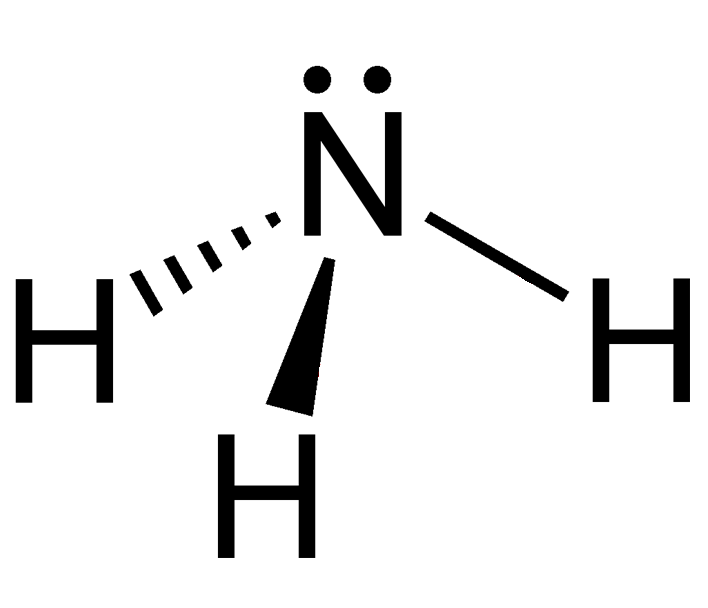
Most fish can tolerate ammonia levels up to 0.02 ppm, so it is best to aim to keep your ammonia NH3 levels between 0.002 and 0.01 ppm. Any levels above 0.05 ppm can be harmful and can cause death in fish.
Ammonia exists in aquatic systems in both unionized and ionized forms, with the unionized form being the more harmful to aquatic life.
In low pH environments, most of the ammonia exists in the ionized form and is relatively nontoxic. However, in high pH environments, more ammonia exists in the unionized form and it can reach concentrations that are acutely toxic to fish.
If you want to figure out how much ammonia and ammonium are in your fish tank you can use our Unionized Ammonia Calculator (Click Here)
How To Lower Ammonia in a Fish Tank
What brings ammonia levels down? Ammonia levels can rise for a number of reasons in an aquarium, but what’s important is to bring those levels back down as soon as possible. There are a few things that can help with this. Water changes are the most important since this will quickly reduce the amount of ammonia in your fish tank.
Bacteria that occur naturally in the aquarium will also consume ammonia, and these bacteria will multiply when there is more ammonia around, so they can help to keep levels down.
Finally, live plants will take in ammonia and use it to grow, so they can also help to reduce ammonia levels. All of these together can help to keep ammonia levels under control and create a safe environment for your fish.
To Lower Ammonia Perform A 50% Water Change
One of the best ways to lower ammonia levels in a fish tank is to perform a large water change. This will remove a significant amount of ammonia from the water, and will also help to dilute any remaining ammonia. Be sure to use clean, fresh water when performing a water change, and be sure to vacuum the gravel to remove any debris that could be contributing to the high ammonia levels.
Add Beneficial Bacteria To Your Aquarium
There are a few different ways to add beneficial bacteria to your tank. You can buy a product like Dr. Tim’s One & Only Nitrifying Bacteria. These bacteria consume ammonia and convert it into nitrites, which are then converted into nitrates. This process is known as the nitrogen cycle, and it’s a vital part of keeping your fish healthy and the water in their tank ammonia-free.
Use an Ammonia Detoxifier
One easy and quick way to lower ammonia in a fish tank is to use an ammonia detoxifier. This will bind the ammonia and make it inert so that it can’t harm the fish. There are many products on the market that do this, and you can find them at most pet stores and online.
Add Live Plants to Your Tank
A natural way to lower ammonia levels in your fish tank is to add live plants. Plants consume ammonia and nitrates from the water, which helps to reduce their levels. In addition, live plants also provide a healthy environment for your fish by releasing oxygen into the water and giving your fish a place to hide.
Cut Back on Feeding
One way to help lower ammonia levels in a fish tank is to cut back on how often you feed the fish. Overfeeding can lead to excess ammonia in the water, so it’s best to only give the fish as much food as they can eat in a few minutes.
Remove any Uneaten Food from Your Aquarium
Another way to lower ammonia levels in your fish tank is to remove any uneaten food. When food decomposes in the water, it creates ammonia. You should also clean your tank regularly to remove any build-up of algae or other organic matter.
How To Test for Ammonia in Aquarium
Testing for ammonia is easy. You can use a liquid test kit or paper strips. The liquid test kits are more accurate, but the paper strips are easier and faster to use.
Both of these methods are good enough to see if your fish is suffering from ammonia poisoning, and they will help you keep track of the ammonia levels in your tank so that you can take corrective action if necessary.
Best Ammonia Test Kits
API AMMONIA 130-Test Freshwater and Saltwater Aquarium Water Test Kit
The API AMMONIA Test Kit (Buy Online) is one of the best ammonia test kits on the market. API’s AMMONIA Test Kit tests for ammonia levels in both freshwater and saltwater aquariums, and it comes with a color chart and an easy-to-read instruction booklet. Plus, it is easy to use and accurate making it one of the best ways to monitor the ammonia levels in your aquarium.
Tetra EasyStrips 100 Count, Ammonia Test Strips For aquariums
Tetra EasyStrips Ammonia Test Strips (Buy Online) are the quickest way to test the level of ammonia in your aquarium. Plus, these strips are compatible with Tetra’s My Aquarium app, which allows you to track your results over time. Simply dip the strip in your aquarium water and wait 10 seconds. The strip will change color to indicate the level of ammonia present. You can then use the app to log your results and see how they are changing over time.
API FRESHWATER MASTER TEST KIT 800-Test Freshwater Aquarium Water Master Test Kit
The API FRESHWATER MASTER TEST KIT (Buy Online) is one of the best aquarium test kits available on the market. It tests for pH, high range pH, ammonia, nitrite, and nitrate.
The API FRESHWATER MASTER TEST KIT is great for anyone who is looking for a reliable and affordable test kit that will allow them to test all of their water parameters.
Plus, the API FRESHWATER MASTER TEST KIT is also available for saltwater tanks and reef tanks.
Best Ammonia Detoxifiers
API Ammo Lock Freshwater and Saltwater Aquarium Ammonia Detoxifier
API Ammo Lock (Buy Online) is one of the best ammonia detoxifiers on the market. API Ammo LockFreshwater and Saltwater Aquarium Ammonia Detoxifier locks up ammonia, making it harmless to fish and other aquarium inhabitants. Plus, API Ammo Lock is easy to use, simply add it to your aquarium water whenever you need to quickly lower unionized ammonia levels.
Kordon #31256 AmQuel- Ammonia Detoxifier for Aquarium, 16-Ounce
AmQuel (Buy Online) works quickly and efficiently to remove chlorine, chloramine, and ammonia from your aquarium. AmQuel also won’t deplete dissolved oxygen levels, making it a safe and effective choice for frequent use. Plus, AmQuel works within minutes, making it a great choice for anyone looking to help alleviate acute ammonia poisoning.
What is Ammonia Poisoning?
One of the most common problems in a new fish tank is ammonia poisoning. Ammonia is a toxin that fish excrete and it can cause extensive damage to the gills, leading to breathing difficulties and even death.
Causes of Ammonia Poisoning
What causes ammonia poisoning in fish? Ammonia is a by-product of fish waste, and it can quickly build up to toxic levels in an enclosed aquarium.
Ammonia poisoning is one of the most common problems faced by fishkeepers, and there are several things that can cause it. Overfeeding is a common cause, as uneaten food decomposes and releases ammonia into the water.
Another cause is a high pH, which prevents the ammonia cycle from starting. Chloramine, a common additive in tap water, can also release ammonia into the aquarium.
Finally, certain medications and cleaners can also increase ammonia levels. Ammonia poisoning is often fatal, but it can be prevented by maintaining proper filtration and doing regular water changes.
Fish Waste Ammonia Poisoning
Ammonia poisoning in fish is most commonly caused by the accumulation of fish waste in the water. Ammonia is a by-product of fish metabolism and is released into the water through their gills, urine, and feces. If too much ammonia builds up in the water, it can become lethal to fish.
Chloramine and Ammonia Poisoning
One of the most common causes of ammonia poisoning in fish is the use of water conditioners that convert chloramine into ammonia. Normally, beneficial bacteria in the tank break down ammonia into less toxic nitrites and then nitrates. However, these bacteria populations can take time to build up, leaving fish vulnerable during the biological filters establishment period.
Overfeeding Fish Ammonia Poisoning
Ammonia poisoning in fish is most commonly caused by overfeeding. When too much food is given to fish, the bacteria that live in their digestive systems break down the food into ammonia. This ammonia then builds up in the water and can cause serious health problems for the fish.
Overstocking Fish Ammonia Poisoning
Overstocking is one of the main causes of ammonia poisoning in fish. When a tank is overstocked, the waste produced by the fish builds up faster than it can be processed and removed. This causes ammonia levels to rise, which can be harmful or even fatal to fish.
Ammonia Cycle Not Starting Can Cause Ammonia Poisoning
One of the main causes of ammonia poisoning in fish is when the ammonia cycle doesn’t start. The ammonia cycle is responsible for breaking down ammonia into less harmful substances like nitrites and nitrates. Without the cycle, ammonia can quickly build up to poisonous levels in an aquarium.
There are a number of things that can cause the ammonia cycle to fail. One common issue is not having enough bacteria in the tank to process the ammonia. This can happen if the tank is new, or if medications have been used that kill off bacteria.
Another possible cause is your tank might not have sufficient aeration. Nitrifying bacteria need oxygen to thrive, so if there’s not enough dissolved oxygen in the water (due to insufficient aeration), they won’t be able to do their job as effectively.
High pH can Cause Ammonia Poisoning
Ammonia poisoning in fish is most often caused by high pH levels in the water. The higher the pH level, the more unionized ammonia is present in the water, and it is this unionized ammonia that is lethal to fish.
Can Ammonia Poisoning in Fish be Cured
Yes, ammonia poisoning in fish can be cured. If the damage is mild, the fish will usually recover within a short period of time. However, if the damage is severe, the fish may die.
What Do I Do If My Fish Has Ammonia Poisoning
If you believe your fish has ammonia poisoning, the first thing you should do is a water change. Ammonia levels can spike quickly and dangerously, so it’s important to remove as much of it from the water as possible.
You can use an ammonia detoxifier to help bind and remove the ammonia from the water.
Then after the water change, it’s also important to heal the stress coat on your fish. This will help them recover and repair any damage that has been done by ammonia poisoning.
How Long Does It Take for a Fish to Recover from Ammonia Poisoning
It depends on the fish and the extent of the ammonia poisoning. Some fish can recover within a few days to weeks, while others may not survive at all. It really depends on how much damage the ammonia has caused and how quickly the fish can recover from it.
Even if fish appear to recover from ammonia poisoning, long-term effects such as increased susceptibility to disease and reduced growth rates may still be a lingering problem. Because of this, it is always best to prevent ammonia poisoning in fish by maintaining 0ppm ammonia levels at all times.

